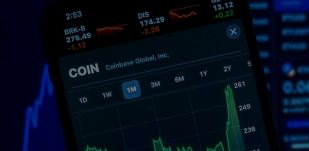How to Calculate an Exchange Rate – Currency Conversion Formula
Exchange rates refer to how much it costs to exchange one currency into another. As they fluctuate on a daily basis, how much your currency is worth can vary at any given time. In this blog, we’ll show you how to get the best value for money from your international transactions. We’ll cover the formulas to convert currency and explain how to compare the market exchange rate with what you’ll receive from your bank or money service transfer provider.
How to work out currency conversion yourself
Finding foreign exchange rate quotes online or through your local bank is very different to being able to understand how to read them.
Since EUR/USD is one of the most popular currency pairings, we’ll use it to explain how to work out currency conversion.
Here is the key for our simple currency conversion formula:
A = money you have in the currency you wish to convert
B = exchange rate
C = money you have after applying the exchange rate
Scenario 1: EUR as a base currency to be converted into USD
Susan and David live in Spain and want to send €1,000 as a gift to their son who lives in the United States. When they exchange their funds the euro to dollar exchange rate is €1.09, meaning their son will receive $1,090.
A * B = C (* = multiplied)
You have €1,000 EUR (A) that needs to be converted to USD. At the time of writing this, the exchange rate is $1.09 (B), so every €1 you have is worth $1.09.
To calculate your currency, you would multiply 1000 by 1.09, which equals 1090 (C). This is the amount of money you’d have in dollars after the exchange - $1,090.
1000 * 1.09 = 1090
Scenario 2: Reversing the formula to calculate USD into EUR
Elsie, who lives in the United States, has a skiing trip planned in the French Alps which will cost €3,500. When the time comes to pay for the trip, the dollar to euro exchange rate is €0.92. Therefore, she will need $3,804.35 to receive the €3,500 to pay for her trip.
C / B = A (/ = divided)
You know you need to have €3,500 (C) for your upcoming trip. At the time of writing this, $1 is worth €0.92 (B). To work out how many US dollars you will need to convert to euros, you need to divide 3500 (C) by 0.92 (B), which equals 3804.35 (A). So, you’d need to have $3,804.35 to exchange for €3,500.
3500 / 0.92 = 3804.35
Alternatively, if you'd prefer to do your calculations in a spreadsheet, you can use Excel’s VLOOKUP function which has rows, columns and tables to convert from one given currency to another.
How are exchange rates calculated?
Forex refers to foreign exchange and the forex market determines the exchange rate for every currency. Financial institutions like commercial banks, central banks, money managers and hedge funds use forex trading to trade global money around the clock.
Earlier on, we mentioned that EUR/USD is a popular currency pair. As currency values are always relative to one another, you’ll always receive them as a pair from your bank or money transfer service provider. Several factors influence how exchange rates are calculated:
Strong economic performance – foreign investors prefer to invest their capital in countries with positive economic performance over those showing signs of economic or political turmoil.
Differences in inflation – when a nation has consistently low inflation, it can exhibit rising currency value. This is because purchasing power increases relative to other currencies. So, when a nation experiences inflation, its currency value decreases.
Differences in interest rates – when lenders in an economy secure higher interest rates, they have a higher return relative to other countries. So, higher interest rates generally attract foreign capital and can often cause the exchange rate to rise.
Current account deficits – if a country’s current account has a deficit, it will have a higher demand for foreign currencies than it receives through sales or exports. It will also be supplying more of its own currency than foreigners demand for its products. With an excess demand for foreign currency, the country’s exchange rate will be lowered until domestic goods and services are cheap enough for foreigners, and foreign assets are too expensive to generate sales for domestic interests.
Public debt – nations with large public deficits and debts are less attractive to foreign investors. Why? Because large debts encourage inflation.
Terms of trade – if the price of a country’s exports rises at a greater rate than its imports, this means there’s a greater demand for its exports. As a result, revenues will rise from exports, which will provide increased demand in the country’s currency.
The two types of exchange rates
1. Flexible exchange rates
Flexible exchange rates are used by many developed countries and are based on supply and demand. They ‘self-correct’ based on changes in the economy, so if the demand for a currency is low, then their value will decrease. A lower foreign exchange rate makes imported goods more expensive and has a significant knock-on effect on the economy. Consumers turn to local goods and services, which generates jobs and contributes to a market correction.
2. Fixed exchange rates
In countries such as Panama, Qatar and Saudi Arabia, their governments set and maintain an official exchange rate. This set price tends to be decided against a major currency, such as the US dollar. The country’s central bank will buy and sell their currency on the forex market in exchange for the currency it’s compared against. For smaller or less developed countries, fixed exchange rates help ensure the smooth flow of currency, attract foreign investment and avoid devaluation.
How to find and read market exchange rates
There’s a fair amount to consider with foreign exchange, so we’d advise approaching it using these four go-to steps:
- Know the country’s exchange rate before you travel – these are usually posted online and at banks, airports and currency exchange shops.
- If you don’t know the exchange rate, you can use this formula: starting amount (base currency) / ending amount (foreign currency) = exchange rate.
- Use the currency conversion formulas mentioned earlier to calculate how much you’d get for your currency if you were trading in the forex market.
- Work out the extra amount you could be paying by comparing the market exchange rate with the rate your bank or currency exchange service gives you. Take the difference between the two exchange rates and divide this figure by the market exchange rate. Then, times this amount by 100 to get the total percentage mark-up.
Key takeaways
Before making any foreign exchanges, ensure you’re familiar with the following:
- The forex market determines the exchange rate for every currency and forex trading is used to trade global money around the clock.
- Use currency conversion formulas to find what your base currency is worth in foreign currency, using the exchange rate.
- The exchange rate you see on Google will be different to what your bank provides, because banks take a percentage profit. This difference is known as the exchange rate margin.
- There are several factors that influence the value of a country’s currency, such as economic performance, inflation and interest rates.
- There are two types of exchange rates – flexible exchange rates which change based on supply and demand, and fixed exchange rates that are set and maintained by a country’s government, in line with a major currency such as the US dollar.
Exchange currency hassle-free
We understand that transferring large sums of money into another currency can be daunting and confusing. Plus, it’s impossible to predict exactly how exchange rates will perform. That’s why at Clear Currency, we’ll assign you a dedicated account manager to cut through the jargon and help you transfer your money quickly, easily and securely.
We’ll use our expertise to help you pick the best time to move your money, as well as get the most competitive exchange rate available based on the mid-market rate, which is the best available exchange rate. To reduce the risk of currency fluctuations and exchange rate changes, we’ll lock in a forward contract. This lets you buy or sell currency at a predetermined exchange rate on a specific date in the future, eliminating any uncertainty as you know exactly how much you will pay or receive at that future date.
To access market-leading deals on exchange rates and enjoy a friendly, personalised service, get started by signing up for a free account today.
Related Articles
How to Mitigate Foreign Exchange Risk
Currency risk can have a significant effect on the efficiency and profitability of any international business. Each exchange rate movement affects how much you receive from sales and what you pay to suppliers.
Read more
Moving to Dubai from the UK: Checklist
You’re ready for a new life overseas and have decided you’re moving to Dubai. Now it’s time to consider the various costs involved, from your visa and accommodation, to health insurance, shipping your belongings and bringing your beloved pets along too.
Read more
Currency Outlook Quarter 1 2023
Clear Currency looks back at the performance of the US dollar, euro and sterling in Q4 2022, and assesses what might be in store for Q1 2023.
Read more


